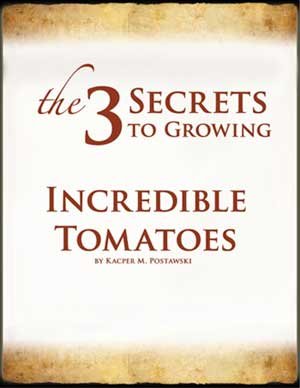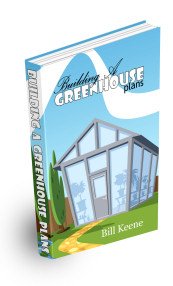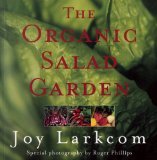
Lawns and Landscaping in February
As mentioned in January... While this is a website espousing
organic gardening methods,
even the most organic gardeners have been known to turn to chemical lawn fertilizer so the next paragraph is for them...
Not need to water the lawn this month, the ground is cold, frozen, or covered with snow. The grass is dormant. Do not fertilize. Applying
fertilizer to frozen soil can pollute the water. Melting snow and winter rains wash the fertilizer off the soil surface into surrounding storm sewers,
rivers, and lakes.
- Variety in form and texture is important when designing a planting. However, too many different types or mixtures of plant materials should
be avoided because it can create a confused or cluttered appearance as well as increase maintenance.
- Consider using ferns in your home landscape. Maidenhair, sensitive, cinnamon, and Christmas ferns are good choices. Ferns like an even supply
of water throughout the growing season, so soil with a high humus content is ideal because it retains water.
- When choosing plants for the landscape and garden, remember crops that are suited to your soil and climate will be more resistant to
problems. If you experiment with exotics, be prepared to give them more care.
- Don't forget wildlife when creating a landscape plan. They need both living and dead trees for survival.
- If you think back over the yard work of last year and feel it took too much time and effort, an analysis of your site and the suitability of
your plantings is in order. Landscaping looks best and is most easily maintained where a site has been analyzed for its natural characteristics,
including soil texture, pH, drainage, slopes, sun and shade patterns, wind direction and intensity, exposure to salt or air pollution, and so on. With
such an analysis in hand, you can select plants that work with your site, rather than in spite of it. The result will be reduced maintenance and a
better-looking landscape.
- Avoid walking on grass or ground covers while they are frozen. The frozen leaves are brittle and easily damaged. Ajuga is especially
sensitive to being walked on during the winter, and large portions can die back, leaving bare spots for the spring.
- Place stakes in intended planting spots and view from several angles to help you picture how new plants will look. Once you have the
plants ready to plant, always place them, still in the pots, where you intend to plant and step back and view the whole area one last time before
committing the plant to the ground.
- While going about your business, keep an eye out for plants with interesting winter form or color. Consider planting similar varieties
in your yard so you can enjoy them at home next year.
- Watch the sun as it wheels around your house. See which sheltered outdoor nook it illuminates, and begin to plan your sunspot today.
- Cold winds this month should remind you to order evergreen windbreaks. Some suggestions: American arborvitae, Austrian pine,
Canadian hemlock, and white spruce.
- Plan to attend garden and landscape meetings and clinics arranged by the Extension agents in your county or city. The latest
and best in gardening information will be presented. Call your local
Extension office to find out what is offered in your area.
- If bird feeding has been a favorite activity this winter, order trees and shrubs that provide cover and small fruits for your feathered friends. Consider
species such as crabapple, hawthorn, holly, dogwood, and pyracantha that can help lure hungry birds from cultivated fruits, if planted on the opposite side of the yard.
- Top dress fescue lawns with an inch of compost or an application of an organic fertilizer such as Espoma 'Plant-tone' (5-3-3) to encourage healthy growth.
- Remember, clover in a lawn is a natural source of nitrogen. A diverse lawn is more natural, healthier, and less boring.
- Don't fertilize warm season grasses, such as Bermudagrass, because they are dormant now.
"In joy or sadness, flowers are our constant friends."
-- Kozuko Okakura

FREE Garden Journal!!
Join "Garden Notes" and plan for Harvest Success as you track and record your gardening progress.
Your Free Personal Garden Journal has pages for jotting down notes on the seeds you start,
your new plantings, when you fertilized, and even a graph to plot a new garden.

FREE Report
If you're interested in growing tomatoes, you've got to read this free report, because you're about to find out
3 age-old, tried and tested, organic tomato growing secrets that turn any tomato plant into a thriving source of the
juiciest, most
mouth-watering tomatoes you've ever tasted.
I didn't want to see another internet "eBook" on growing anything, but my husband signed up for Kacper's free report and I have to tell you, it is WELL worth the read. If you think you know everything about growing tomatoes, I challenge you to read Kacper's report. HIGHLY recommended!
Free Report Here

What's New?
Discover How To Easily Build An Attractive And Affordable Greenhouse That Will Grow Anything In Any Conditions… Also, building your own greenhouse just makes economical sense. You can build a greenhouse at just a fraction of the cost of buying a pre-built one. Most pre-built greenhouse you buy need to be assembled anyway, you’re really just paying hugely inflated prices for the material.
Click Here!
Book of the Month

Based entirely on organic gardening principles. This says it all. Joy's book has been fully revised and updated and includes extensive new reading, particularly
on oriental and fruiting vegetables, and did I mention, is now entirely based on organic gardening practices.
Read More...






